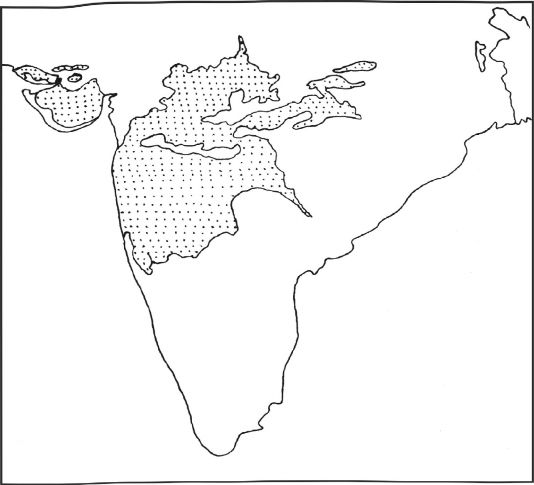THE CRETACEOUS SYSTEM (THE DECCAN TRAP)
The Cretaceous Period extends from about 146 million years ago to 65 million years ago. The term ‘Cretaceous’ has been obtained from the Latin creta, meaning‘chalk’. This is a very widely distributed system in the country which has divergent facies of deposits in different parts of India. This period is marked by the transgression of the sea (Coromandal coast, Narmada valley) and outpouring of huge quantity of lava (basalt) so as to form the Deccan Trap and intrusion of plutonic rocks such as gabbro and granite.
Towards the end of the Cretaceous period the Peninsula was affected by intense volcanic activity. During this period, enormous quantity of basaltic lava was poured out to the surface assuming a great thickness of over three thousand metres. The Lava Plateau (the Deccan Trap) is the result of that lava eruption. The Deccan lava covers about five lakh sq km of area in Gujarat (Kachchh, Kathiawad), Maharashtra, Madhya Pradesh (Malwa Plateau), Chhattisgarh,Jharkhand, northern Andhra Pradesh and north-western Karnataka (Fig. 1.6).
The lava plateau of India (Deccan Trap) has a maximum thickness of about 3000 m along the coast of Mumbai from where it decreases towards south and east. It is about 800 m in Kachchh, 150 m at Amarkantak and 60 m at Belgaum (Karnataka). The individual lava flows, on an average, have a thickness of about 5 m to 29 m. Such flows have been identified in a boring near Bhusawal (Maharashtra). These are inter-bedded with sedimentary beds called ‘inter-trappean beds’.
The basalt of the Deccan Trap is used for the construction of roads and buildings. Moreover, quartz, bauxite, magnetite, agate and semi-precious stones are also found in the trap. It is also rich in magnesium, carbonate, potash and phosphates.

